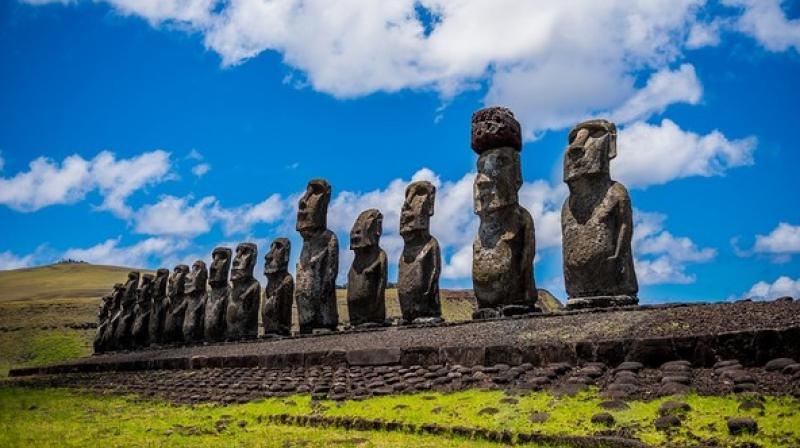Here's why Easter Island statues stand where they do
According to the study authors, the findings suggest that Rapa Nui's statues had a more practical significance to the island's early people.

Washington: There are a number of mysteries surrounding the Easter Island. While researchers have long puzzled over why the huge statues were placed where they are, a new study says that the people of Rapa Nui, positioned them near sources of fresh water.
Archaeologists studied the location of the statues and the platforms on which they stand. Notably, the statues are called moai and the platforms, ahu.
The authors of the new study, published in the journal PLOS One, sought to understand the distribution of the ahu in order to further understand their creators.
Polynesian seafarers who first arrived on Rapa Nui, approximately 900 years ago, went on to construct more than 300 ahu and almost 1,000 moai, which are believed to represent significant ancestors.
In a story published in CNN, study co-author Carl Lipo, professor of anthropology at Binghamton University, New York, said that the knowledge would researchers something about how the early people of Rapa Nui used the landscape and what they found important.
Researchers from six US institutions zeroed in on an isolated area in eastern Rapa Nui and analysed the natural resources near the ahu. They focused on rock mulch gardens in which crops like sweet potatoes were grown. They also looked at marine resources including sites for fishing, and sources of fresh water.
Researchers found no correlation between the ahu and the gardens, suggesting they were not situated there to monitor or signal control over the resources.
In fact, while both marine resources and fresh water sources were found near the ahu, the researchers concluded only the latter was significant.
Experts mapped the area and found that freshwater emerged from underground in areas along the coast through groundwater discharge.
Speaking about it, Lipo said that they would see horses drinking out of the ocean, and it turned out they knew exactly where the fresh water was coming out from. That explained the high concentration of moai and ahu along the coast, the researchers inferred.
Inland statues, too, were most probably connected to fresh water as they were found to be situated near caves, or other fresh water sources.
According to the study authors, the findings suggest that Rapa Nui's statues had a more practical significance to the island's early people.

